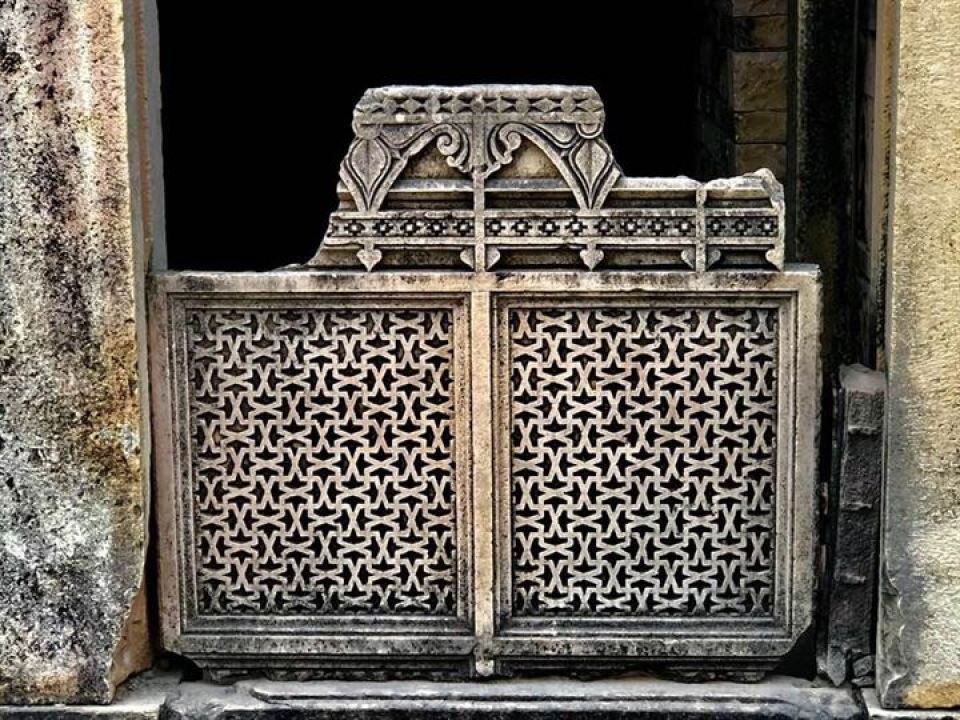
It is best known for its textiles, but Chanderi is also a town of historical importance
It is town mentioned in the Mahabharat. It has a rich history, having been ruled at various points by the Gurjara-Pratiharas (who first made it their capital), the Bundela Rajputs, the Delhi and Malwa Sultans, as well as the Mughals, Scindias, and the British. Yet, many in India have only heard of Chanderi in connection with the traditional textile craft for which the town in Madhya Pradesh is famous. At least, I only knew of Chanderi sarees.
But Chanderi is much more than that. Tucked away in the hills on the edge of Bundelkhand and Malwa, this town, which was a major link for connecting trade routes, is of historical importance. The presence of various rulers, some of whom were enthusiastic builders, especially the Malwa Sultans, can be seen in the heart of the town in its many Jain and Hindu temples, huge rock sculptures, baolis (stepwells), tombs, chatris (dome-shaped pavilions), madarsas and dargahs. The grand vizier of emperor Akbar, Abul Fazl, in his 16th century work titled Ain-e-Akbari (Constitution of Akbar) mentions that Chanderi had 14,000 stone houses, 384 markets, 360 caravanserais, and 1,200 baolis.
During the 14th century, when the Tughlaq rule in Delhi was on the decline, governors in the Deccan declared their independence one by one. Building activity was suspended in Delhi, and artisans and skilled labourers found generous patrons in Malwa where the kings were starting their construction activity. This combined with Persian influence gave rise to a Malwa style of architecture.
According to the art historian Percy Brown, workmen were also recruited to Chanderi from Ahmedabad. While Tughlaq architecture can be best described as solid, it is hardly ornamental. The workmen who came from Gujarat were well known for their intricate stone latticework, which is most famously seen in the Sidi Saiyyed mosque in Ahmedabad. The stone latticework screens (jaalis), which are not only ornamental but also functional as they provide light and air, symbolised Chanderi town for me. But although I travelled through Chanderi to all its famous historical spots, including a massive rock sculpture of the Jain Thirthankara Adinath, what held me spellbound was a simple graveyard.
Driving into the town, I saw a board that read ‘Hazrat Nizamuddin parisar’ (compound). Old town houses stood in this area, but they were not what I was looking for. I had read of a beautiful grave complex there. A young boy, who saw our group wandering around, asked us what we were looking for and led us through some passages to what he called the qabristan, or cemetery, in the inner city. Inside these narrow lanes, I saw some exquisite jaalis with every kind of symbolic and geometrical pattern on them.
We reached the cemetery. In every enclosed tomb was the Mihrab, a semicircular niche that indicates the direction of the Qibla, or the direction of the Kaaba in Mecca. The graves were neat and clean, and had no flowers or lamps on them. Most of the intricately carved grave cenotaphs lay under the open sky; a few were inside domes. The dome of one particularly beautiful grave had fallen down and the jaali was worse for wear. The jaalis had obviously seen better days.
According to the Archaeological Survey of India, these are the graves of the family of the famous Delhi Chisthi Sufi Saint Hazrat Nizamuddin Auliya’s descendants, who had come to Chanderi. However, the Delhi Nizami family says they have no records of anyone moving here.
From an article by Simon Digby I found out that Hazrat Nizamuddin had sent a khalifas to Chanderi.This graveyard should be, his family, in my humble opinion.
No book on architecture mentions this complex either. The origin of the complex, according to an inscription on one of the graves, goes back to the 15th century.
However, what I could research were some of the symbols — thenagabandhana, or entwined snakes, for instance, which are carved on the stones and are magical even in their broken state. Their eternal knots symbolise the flow of time and movement. According to my friend Sudha Ganapathi, an iconography expert, many of the symbols on these jaalis are similar to the kolam patterns (geometrical designs drawn traditionally with rice powder outside homes) in south India.